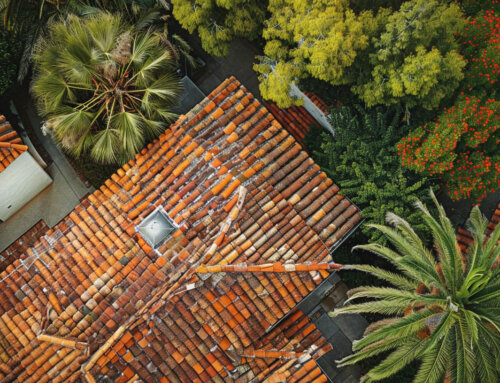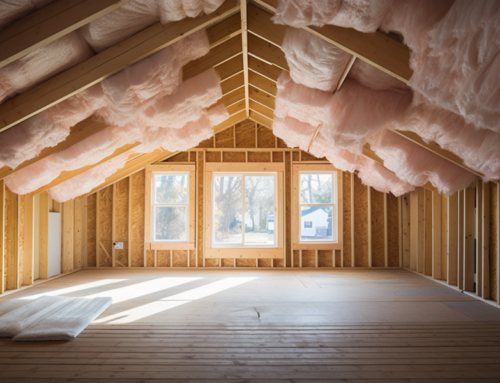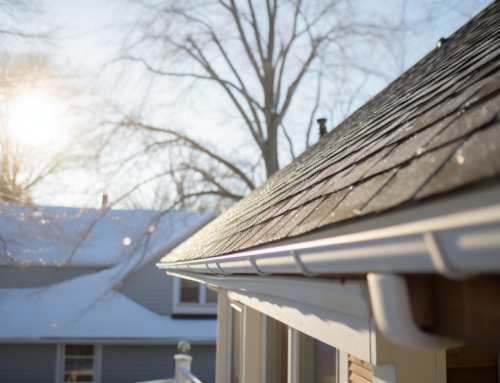Roofing is an integral part of any structure, and it’s no surprise that this field, like many others, has its unique set of terms. San Diego County Roofing & Solar believes that an informed client can make better decisions, and with that principle in mind, we present an in-depth exploration of crucial roofing terms. Whether you’re a homeowner scouting for reliable San Diego roofing companies or simply curious about the jargon used by roofers in San Diego, this glossary will offer clarity.
Foundational Roofing Materials
- Asphalt Shingles: Favored for their balance of cost and longevity, asphalt shingles are a common sight in many San Diego homes. These shingles can resist fire and wind, and they come in various colors and styles, providing flexibility in aesthetic choices.
- Underlayment: Acting as a secondary barrier against external elements, the underlayment is a water-resistant layer beneath the main roofing material. It plays a pivotal role in preventing water infiltration, especially in inclement weather conditions.
- Flashing: These thin sheets, often made of metal, act as guards at the intersections or protrusions on the roof, like chimneys, vents, or skylights. By directing water away from these areas, flashing prevents potential leaks.
Anatomy of a Roof
- Deck: Consider the deck as the canvas for a roofer. This foundational layer, constructed from sturdy materials like plywood, serves as the base upon which all roofing materials lay.
- Eave: Ever noticed the part of your roof that extends out, almost reaching out to the world? That’s the eave, which often serves as the attachment point for gutters, ensuring rainwater gets directed away from the structure.
- Ridge: Like the crest of a wave, the ridge is the highest point on a roof, the line where two roof slopes intersect. It’s often reinforced for added stability.
- Valley: In roofing terms, a valley is like a riverbed. It’s where two sloping roof sections merge. Proper sealing and protection of valleys are crucial, as they channel water and can be vulnerable spots for leaks.
Crucial Roofing Procedures
- Re-roofing: Sometimes, a full roof replacement might not be necessary. In such cases, re-roofing offers an alternative by adding a fresh set of shingles over the existing layer. It’s a quicker, less labor-intensive solution for homes in need of a roofing refresh.
- Tear-off: Unlike re-roofing, tear-off means going back to the basics. This process strips away all old roofing materials to lay down new ones. While more intensive, it guarantees a fresh start for the roof.
- Installation: This overarching term encapsulates the process of setting up new roofing materials, be it on a new structure or during a renovation. Proper installation is vital for the longevity and efficacy of the roof.
Beyond the Basics: Additional Roofing Components
- Dormer: Architecturally speaking, a dormer is like an eye on a roof. It’s a protruding structure, often housing windows, that allows for additional light and space in the underlying room.
- Soffit: This might seem like an obscure term, but you’ve seen it many times. The soffit is the underside of any part of the roof that extends beyond the main structure, playing a role in ventilation and aesthetic appeal.
- Fascia: Picture the fascia as a finishing touch or a binding spine on a book. It’s the vertical edge connected to the ends of rafters or where the gutter clings to the roof. It provides a smooth edge to the roof and supports the gutter system.
For further exploration of these terms, the National Roofing Contractors Association provides an exhaustive guide, shedding light on each component’s significance.
The Importance of Roofing Literacy
San Diego County Roofing & Solar cannot stress enough the importance of being informed. Knowledge is power. When homeowners or property managers are versed in these terms, they can interact more confidently with San Diego roofing companies. Clear communication can lead to better service, ensuring that the work aligns perfectly with the client’s needs. Moreover, it aids in understanding the intricacies of roofing, paving the way for optimal maintenance and long-term property care.
In sum, this glossary is not just a list of terms; it’s a tool. Understanding these terminologies is invaluable for those navigating the world of local roofing companies in San Diego or anywhere else. With this guide in your arsenal, you are better prepared for any roofing endeavor, ensuring the best outcomes for your property.











